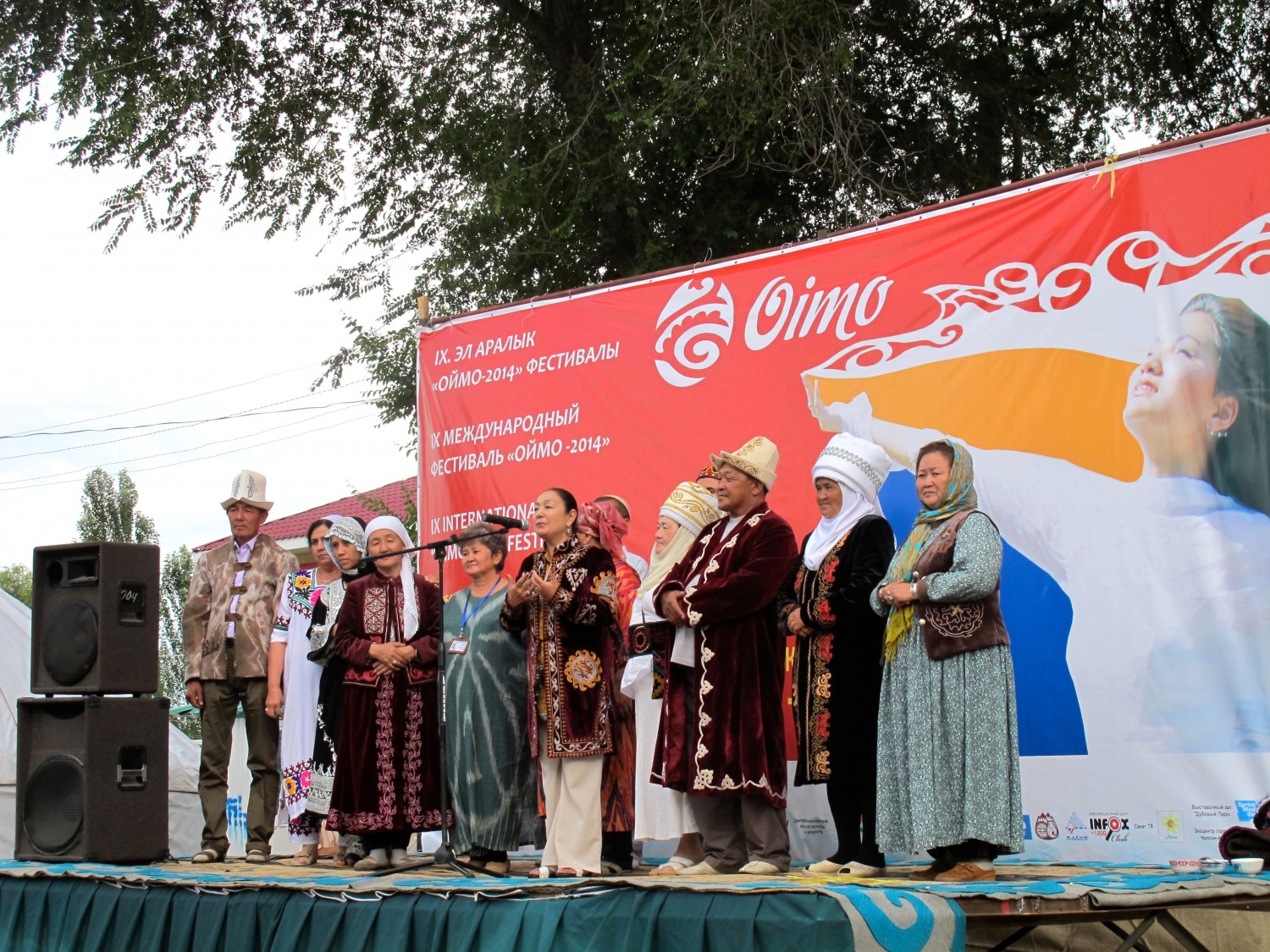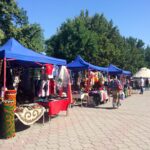International ОIМО Festival/Международный фестиваль ОЙМО
Ala-Too Square, Bishkek/Ала-тоо пл., Бишкек
July 25-27
The 9th Annual International OIMO Festival was held this past weekend in Bishkek. The festival is a celebration of regional cultures with national foods, music concerts, film screenings, fashion shows, and most notably a large handicraft fair. Artists, vendors, and presenters hail from across Central Asia – Tajikistan, Uzbekistan, Kazakhstan and Afghanistan – to share their unique cultures and celebrate regional bonds and friendship.
Events started on Thursday with a conference on regional handicrafts and cooperation, co-sponsored by the Bishkek Business Club. Though Turkmenistan was not represented, artisans and organizations from the other four Central Asian republics spoke about the state of craft production in their countries, and offered suggestions for improvement and growth. Expanding to Western markets was a popular topic, with speakers from Sweden and Italy offering sharing their stories and offering advice. After the business of the conference, the OIMO festival kicked off in earnest on Friday. Over 150 artists were present, displaying handmade goods and celebrating their regional cultures. That afternoon, a parade of traditional national costumes wound its way through Ala-Too Square and arrived at the festival stage with music, dancing and celebration. Dinara Chochunbaeva, director of the Kyrgyz branch of the Central Asian Craft Support Association (CACSA) and the festival organizer, then took the stage to welcome all participants and guests.
Products at the festival spanned from the simple to the elaborate, and showcased the diverse handicraft traditions in Central Asia. Kyrgyzstan was heavily represented by felt, and the products ranged from the ornaments and slippers you can find at any Bishkek souvenir shop to elaborate shyrdak and ala-kiyiz rugs and felt clothing. There were also a number of Uzbek artists selling ikat/atlas fabric, scarves, and clothing. Uzbekistani silk is popular in Kyrgyzstan, and is often used in the felted silk scarves popular in souvenir shops, but these printed ikat silks from Uzbekistan are rarely seen around Bishkek. Uzbekistan was also well represented by artsits selling Shakhrisabz embroidery and painted pottery. Tajikistan’s embroidered suzani were also popular around the festival.
Throughout the day, master classes demonstrated some of these handicraft techniques, such as painting on pottery and embroidery. I got to participate in the making of an ala-kiyiz rug by helping turn the wool into felt: aggressively kicking the felt roll with five other helpers to agitate the fibers! Participation in the master classes was free, but the final products must be purchased if you want to take your handiwork home with you. Each evening, the OIMO festival featured various performances and entertaining events, including national dances, musical performances, a fashion show, and a film screening. And if you get hungry from shopping, crafting and dancing, there’s also a booth featuring Kyrgyz national foods. It’s mostly breads and kurut – dried yogurt balls – with a selection of national drinks to wash it all down. It was here that after two trips and 10 weeks in Kyrgyzstan, I finally tasted kumis – fermented mare’s milk. It was certainly an experience, though I was told that closing your eyes and drinking the whole cup at once is the way to go. That seemed to do the trick; I finished the cup!
The OIMO Festival is held three days in Bishkek, then moves to Cholpon-Ata along Lake Issyk-Kul for an additional week. Without a working website, it can be hard to find reliable information about the festival, but it’s held yearly around the end of July and you can’t miss the blue tents and yurts set up in Ala-Too square. It’s a fun and festive event, and a great introduction to Central Asian cultures.











